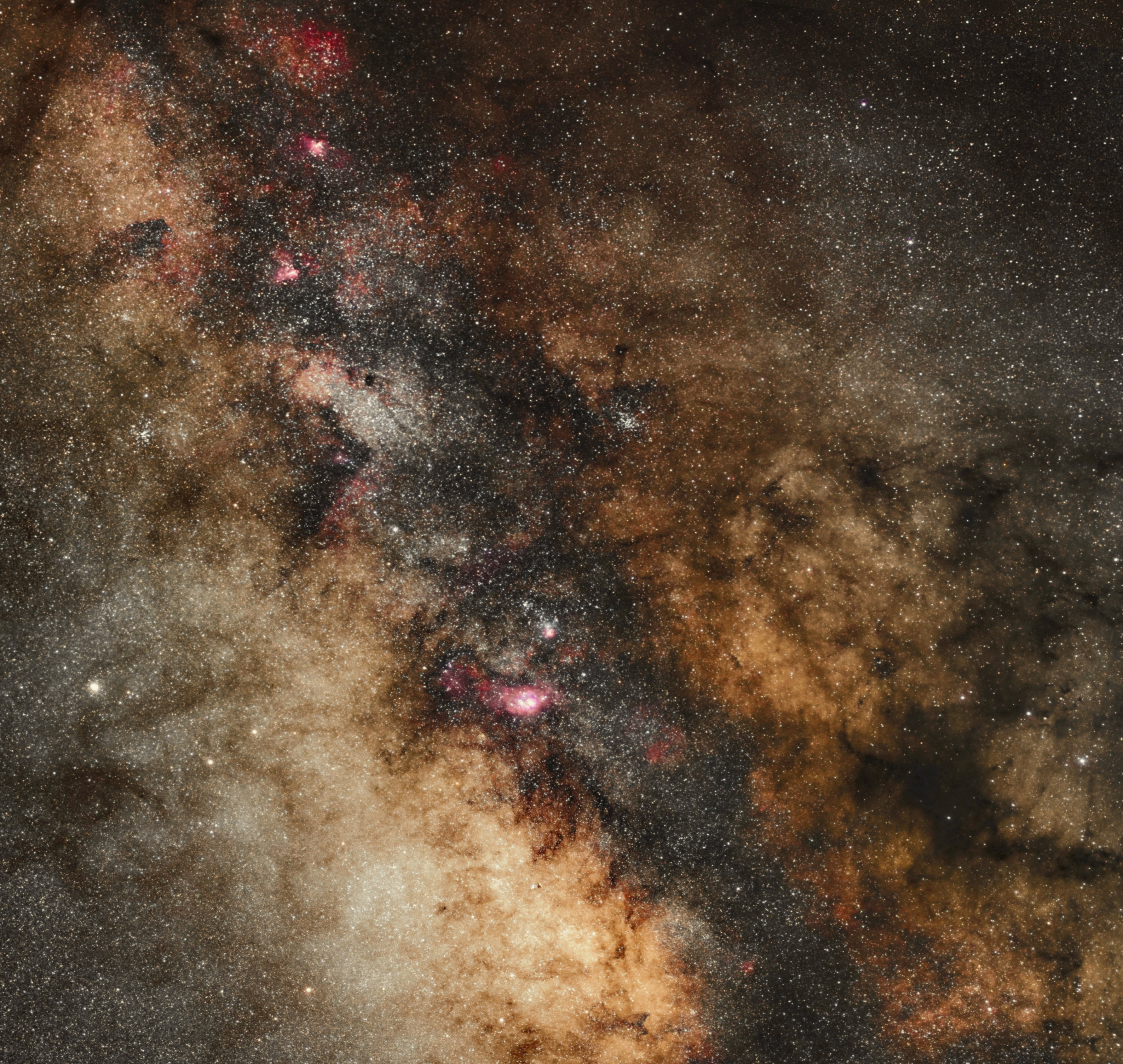
At –29° in declination, our Milky Way’s galactic center — located in Sagittarius — is low for most Northern Hemisphere observers. It passes straight overhead in winter for those in southern Australia; South Africa; and parts of Argentina, Brazil, and Chile.
Astronomers know a lot about barred spiral galaxies like the Milky Way from observing many examples (such as M83). A nucleus forms the core, surrounded by a central hub and flat disk. Astronomers have used many tools to map the Milky Way in three dimensions. Harlow Shapley used globular clusters to determine the Sun was about 30,000 light-years from the center. (Modern measurements give 26,000 light-years.) Others mapped superluminous giant stars. Radio astronomers had the most success since radio waves are transparent to stars and nebulae. They also determined where our galaxy’s nucleus is located and that it has a massive black hole in the center.
You can point a telescope in the direction of the Milky Way’s nucleus, but you can’t see it. Why? Try looking at your neighbor’s back porch light from the front yard of their house with all the doors and windows closed. You might be able to tell if it’s on by the light shining on the trees in the backyard, but the light fixture itself is obscured.
That doesn’t mean you shouldn’t look in this direction; knowing what’s hidden behind the rich star field makes it worth the effort. Within 2° of the galactic center are at least three open clusters, an emission nebula, and a planetary nebula. These include Collinder 347, a magnitude 8.8 cluster involved with the emission nebula Sharpless 2–16. A degree northeast is Collinder 351. A small dark nebula lies to its west. Scan the region and see what else you can find.









